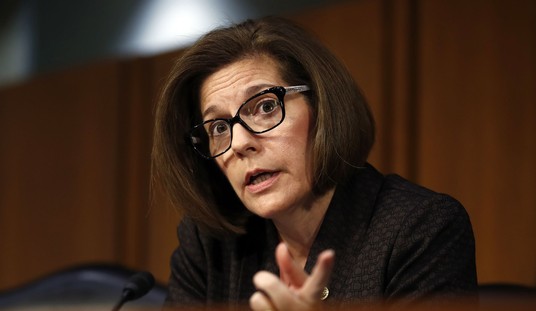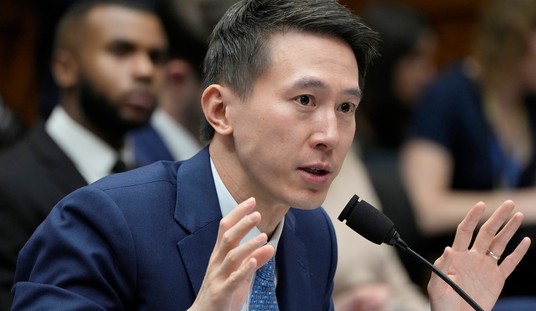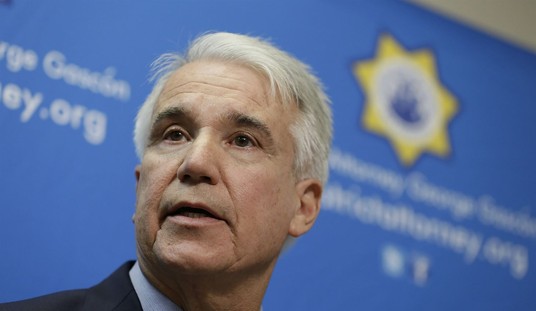It’s tough to count Donald Trump out anywhere in the Midwest, but can he really flip Minnesota in his re-election bid? Not only will the GOP take aim at the state that has gone the longest in the blue column in the presidential race, but they plan a big move for Al Franken’s old Senate seat too. Former Rep. Jason Lewis, who narrowly lost his MN-02 seat in last year’s midterms, will take on Tina Lewis for her first full-term election bid:
Former GOP Rep. Jason Lewis is expected to launch his Minnesota Senate bid on Thursday with guidance from two of Trump’s top political lieutenants. After losing Minnesota by just 1.5 percentage points, the president has told aides repeatedly in recent weeks that he’s determined to win the Democratic stronghold, which hasn’t gone for a Republican presidential candidate since 1972.
Trump’s push reflects his broader reelection blueprint, which is focused on a cluster of Midwestern and Rust Belt states that were decided by razor-thin margins in 2016 and are likely to determine the outcome of the election. Hoping to offset what they concede will be deep deficits in metropolitan centers and suburbs, the president’s advisers are formulating a strategy geared toward amping up conservative turnout in rural areas.
In Minnesota, that means loading up on Trump, plus a rough facsimile of him. The 63-year-old Lewis, who lavished praise on the president during an October 2018 rally with the commander in chief, has embraced Trump’s smash-mouth style as he rails against political correctness. He’s hinted that he’ll run as a Trump foot soldier, recently telling a Minnesota news outlet that “I don’t think it pays to run away from a Trump presidency.”
Probably not, but running with it didn’t help Republicans in 2018, Lewis included. The district in which Lewis ran for re-election had its demographics shifting over the last two decades as it got more suburban and less rural, trends that John Kline’s high regard masked while he remained in the House. Lewis won in 2016 in part because Hillary Clinton generated so little enthusiasm in Minnesota, but the demographics caught up in a hurry two years later when Democrats came back to the polls. The demos in MN-02 (which is also my district) tend to track with Minnesota as a whole.
Trump strategists Bill Stepien and Justin Clark argue, according to Politico, that Minnesota 2020 looks a lot like Pennsylvania 2016. Both states have dense urban areas that seethe with antipathy toward Trump, but also significant rural and exurban areas where Trump picks up a lot of support. The narrow 1.4% margin in 2016 was the closest that any Republican presidential nominee came to winning the state since Richard Nixon’s win in 1972, which Stepien argues as a path for 2020:
“Most importantly, the 2016 results revealed a previously concealed pathway to statewide victory in 2020,” he added.
That ignores one major difference between the two states in 2016 and now. Republicans won statewide offices on a regular basis in Pennsylvania before 2016. In fact, at the time of that election, the GOP controlled the state legislature and had just recently had a Republican as governor. The same was true in Michigan and Wisconsin, the other two “blue wall” states that Trump surprisingly took from Clinton in 2016. By contrast, Republicans haven’t won a statewide election since 2006, when Tim Pawlenty narrowly won his re-election bid in what was otherwise a Democratic wave election.
As smart as Stepian is, he can’t really believe that 2016 showed a path to victory for Trump in 2020 — at least not if his opponent isn’t Hillary Clinton installed by force from the DNC. Trump only gained 2,000 more votes than Mitt Romney had in 2012 in Minnesota, while Clinton lost 180,000 votes from Barack Obama’s 2012 total in the state. That narrow loss was the product of Democratic incompetence, not a sign of a state flipping into the red — as last year’s midterms made clear.
Still, it’s tough to count Trump completely out, at least not until we know who the Democratic nominee may be. Lewis has a shot against Smith too, but that’s going to be an almost Sisyphean task. Lewis is smart, media-savvy, and this time has the opportunity to run across the entire state and not just MN-02. Smith is less media savvy, almost invisible in her Senate seat so far, and might get lost in the shuffle of Democratic fundraising for the DNC’s purple-state flip opportunities. True conservo-libertarians like Lewis don’t have a lot of allies in Minnesota, however, and this state seems to be moving in the opposite direction.
Minnesota will be well worth watching, because if Lewis and Trump score surprise victories here, it will be almost impossible for Democrats to take the Senate and White House in 2020. Be warned, however, that this is a long shot among long shots — no matter how worthy it might be.







Join the conversation as a VIP Member